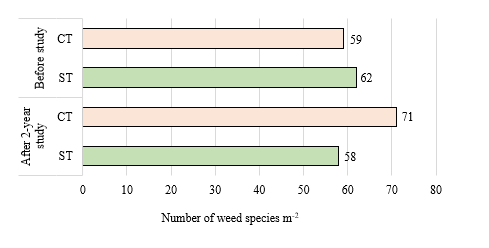Accessing Socio-Economic Conditions of Sugarcane Producers in Nawalparasi District of Western Nepal
Introduction
Sugarcane (Saccharum officinarum) is one of the most important crops in the world because of its strategic position and immense use in the daily life of any nation as well as for industrial uses aimed at nutritional and economic sustenance. Sugarcane contributes about 60% of the total world sugar requirement while 40% came from sugar beet [1]. It is a tropical crop that usually takes between 8 -12 months to reach its maturity. The crop is usually produced from stem cuttings called setts and each node has all the qualities for growing new plants. The shoots grow from underground nodes, and the axillary buds at these nodes give rise to tillers [2]. Most of the people are engaged in sugarcane in Terai. It is the main source of income in Terai as it provides the raw materials for large number of industries. The productivity of sugarcane in world is 57,500kg/ha [3]. According to Ministry of Agriculture Development [4] 2015/2016, the net area under sugarcane cultivation in Nepal is 80931ha with production of 4346754Mt and productivity 53709kg/ha and it covers an area of 7438ha in Nawalparasi with production 462825Mt and productivity 62224kg/ha. Socioeconomic status is the social standing or class of an individual or group. It is often measured as a combination of education, income and occupation. The sugarcane has been playing vital role in reducing poverty, socio-economic advancement. The socio-economic advancement is affected by the fluctuation in price of sugarcane.
The research was conducted in Nawalparasi district, in western development region. A restructured questionnaire was used for collecting and analyzing data upon which this study is based. The respondents were selected by simple random sampling by sampling frame of sugarcane producers and altogether total 60 samples were taken for the study among all the sugarcane growing farmers, 30 from the Susta and 30 from the Partapur rural Municipality. The primary informants were the commercial sugarcane growers and beside them the key informants were also consulted whenever necessary. The secondary data were taken from the number of publications of related organizations like Ministry of Agriculture and Development [4], Central Bureau of Statistics (CBS), DADO of respective district and agricultural cooperatives. The sets of questionnaires for the commercial sugarcane growers were used to collect the primary data by face to face interview. The data analysis was done with the help of Statistical Package for Social Science (SPSS). Various problems and suggestions were ranked with the use of index. Similarly, different analytical terminologies were used during the analysis.
a) Gross margin = sale value - variable cost
b) Total cost = ΣCost incurred in all variable cost
c) B/C ratio = Gross return / Total cost
83% and 87% of the respondents practicing sugarcane farming in Susta and Pratapur rural Municipalities were male and the female practicing sugarcane farming was consecutively 17% in Susta and 13% in Pratapur Municipality. 58.33% was the joint family of the respondent involved in sugarcane farming. The average age of the respondent practicing sugarcane farming was 51.38 year. Growing sugarcane considers a heavy expenditure on different inputs among which maximum expenses was seen occupied by labor cost (Rs 80565.75). The labor is required for different kind of cultivation practices. The labor cost was followed by cost of sett (Rs 41747.30). The cost of sett was followed by fertilizer (Rs 19543.62), transportation (Rs 17719.72), insecticide (Rs 1325.27) and the total expense (variable cost) per hectare was found to be Rs 167396.40. The gross return per hectare was Rs 270222.30 and net profit for sugarcane production was Rs 102826.2 and thus sugarcane was found to be more profitable crop in the study area. The gross margin was found to be Rs 102826.20 for the land area per hectare. The BC ratio was found to be 1.677 for Susta rural Municipality and 1.558 for Pratapur rural Municipality.
Although sugarcane is one of the most important crops of Susta and Pratapur rural Municipality of Nawalparasi district, it requires improvement by providing easy supply of the inputs required in the production and reducing the problem of marketing to ensure the maximum profit for the sugarcane farmers. Farmers are following traditional farming system, which does not provide the adequate income for their living. Low cost technology is a need for the farmer to bring down the cost of cultivation. The marketing channel also does not follows an organized way. If the government provides good prices of crop sale and low-cost input technology for the farmers, then the problem of unemployment can be solved. Net profit from the sugarcane indicated that this crop is valuable in relation to income generation and livelihood improvement. With coverage of such area for cultivation and sugarcane not being a staple crop proves its preference, potential, importance and status among farmers in Nawalparasi district.
More BJSTR Articles : https://biomedres01.blogspot.com


No comments:
Post a Comment
Note: Only a member of this blog may post a comment.